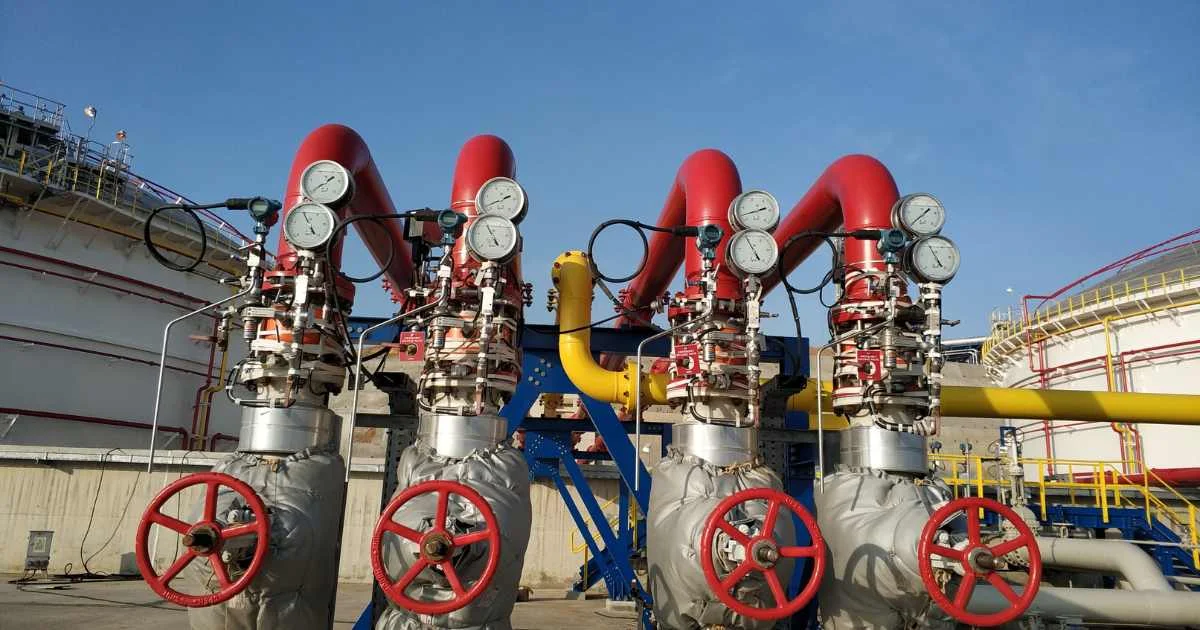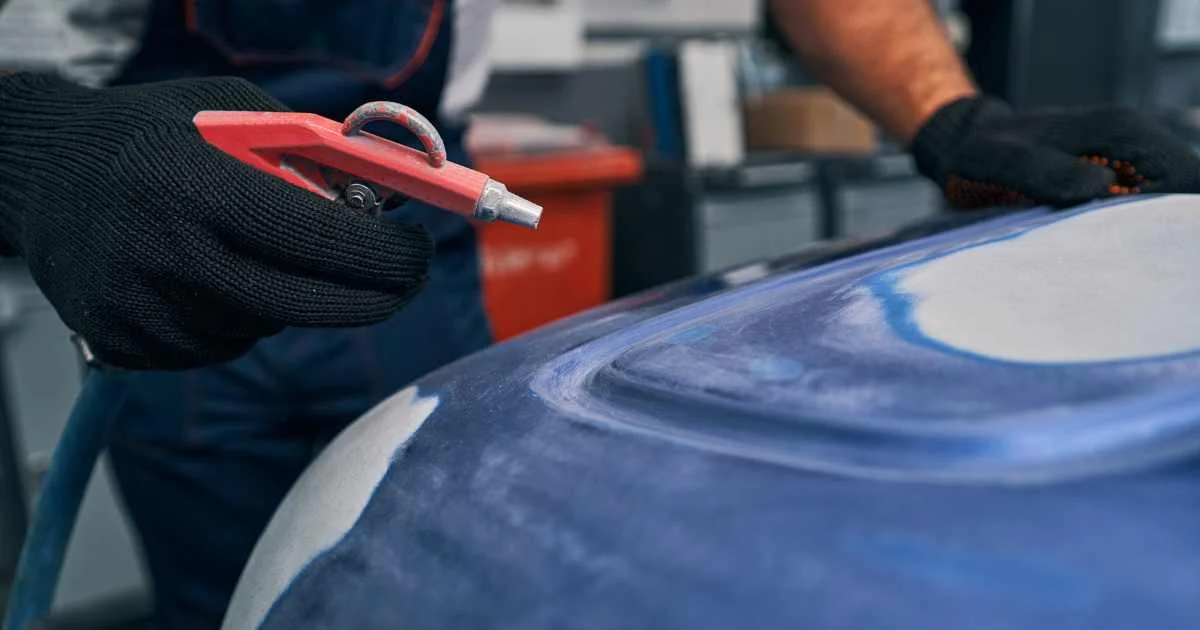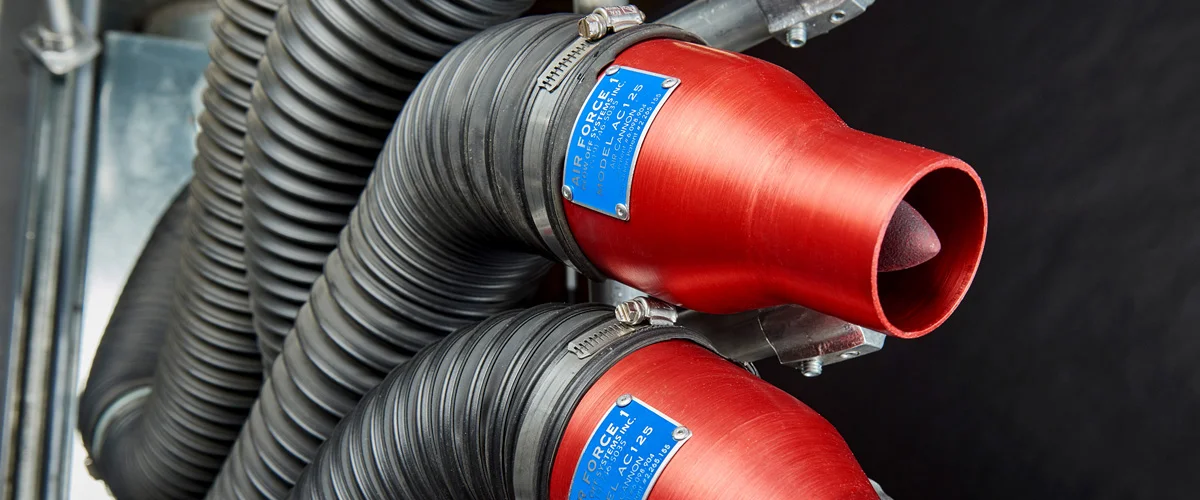
Factories and industrial facilities worldwide use compressed air to power their tools, clean their equipment, and move materials. This versatile system handles many different jobs, but it brings serious risks to worker safety and leads to high operating costs.
More companies are focusing on workplace safety and cost efficiency. As a result, they're finding that blower systems offer a better alternative to traditional compressed air systems. This shift is happening at an important time, as safety data continues to show the dangers of compressed air use. With safety regulations becoming stricter, companies need to examine their current practices and consider safer options that maintain productivity.
Compressed Air: A Costly Convenience
A large-scale industrial facility spends about $500,000 a year just to power its compressed air systems. The cost is so high that people consider compressed air to be the fourth most expensive utility in factories – after electricity, natural gas, and water bills. This high cost affects every factory's bottom line.
Many companies don't realize how much money they're wasting by using compressed air for everything they do. Take this example: when companies use compressed air for basic tasks like cooling down electrical equipment or drying off parts, they end up spending 7-8 times more money than if they had used a blower system to do the exact same job.
New studies have found a concerning trend: many accidents with compressed air don't show up in safety reports, especially when they seem minor at first but develop into serious problems later. Because of this hidden problem, compressed air is likely causing many more safety issues than what current numbers show us.
Understanding Compressed Air Systems
Compressed air systems work by forcing regular air into a smaller space using machines called compressors. The compressed air is kept at high pressures between 80 and 120 psi (pounds per square inch), which makes it a powerful source of energy for factory work. Many places use compressed air because it works well with their existing tools, but this hidden convenience hides serious problems that people are starting to notice more.
The process works in several steps. First, outside air goes through a filter to remove dust and dirt particles. Then, compression machinery pressurizes the air to the required level. This compression makes the air very hot, so the system needs to cool it down to avoid damaging the equipment. The air then passes through more filters and dryers to clean it further before it's stored in large tanks. A system of pipes sends this compressed air throughout the building.
While this process might sound simple, it depends on complex machinery that needs regular maintenance. The high pressures put a lot of stress on the equipment, which can lead to breakdowns. Understanding these mechanics helps explain why compressed air, though useful, comes with risks that newer technologies are trying to fix.
Hidden Risks of Compressed Air
Compressed air is more dangerous than most people understand. If high-pressure air penetrates even a tiny cut in someone's skin, it can cause severe injuries or even death by forcing air bubbles into their bloodstream (what medical professionals call air embolisms).
When people use compressed air for cleaning, it transforms ordinary dust and debris into high-speed projectiles that can damage the eyes or skin. These systems also create dangerous noise levels above 85 decibels – comparable to standing on a busy city street –which can permanently damage workers' hearing over time. The systems waste enormous amounts of energy too. Studies show that 20-30% of the electricity used by compressed air simply escapes through leaks. This inefficiency results in higher energy costs and unnecessary environmental impact.
In facilities that produce food or medicine, compressed air creates additional hazards because it often contains oil mist, moisture, or particles that can contaminate products. Real accidents demonstrate these risks clearly. Workers have suffered serious injuries from seemingly harmless activities, like using compressed air to clean off their clothes - a common but dangerous practice.
The high pressure can force air beneath the skin or turn nearby debris into dangerous projectiles. Extended exposure to compressed air systems affects workers in other ways as well. The constant noise and vibration throughout the workday leads to increased fatigue and stress levels.

Safer Alternatives: The Case for Blower Systems
Blower systems work in a different way that makes them much safer to use. They run at much lower pressures – less than 5 psi compared to compressed air's 80-120 psi. This big drop in pressure removes the risk of air bubbles in the blood and greatly reduces the danger from flying debris. They also run much quieter, which helps workers talk to each other and lowers stress in the workplace.
In places that make food and medicine, blower systems have an important advantage: they can clean and dry things without touching them, which means less chance of contamination. Because they run more quietly – about as loud as people talking – workers can hear each other better, which means fewer accidents from misunderstood instructions.
New blower systems come with safety features that you couldn't get with old, compressed air systems. These include controls that adjust pressure automatically, emergency stop buttons, and systems that can spot problems before they become dangerous. These safety features help companies follow workplace safety rules while keeping their workers safe.
How Blower Systems Save Money
Blower systems save money in several key ways. Since they don't need such high pressures, they use much less electricity – up to 80% less in some cases.
Blowers also have fewer parts that can break, which means less maintenance and fewer repairs. While compressed air systems can lose over 30% of their energy through leaks, blower systems stay efficient over time.
In some jobs, like drying or blowing, compressed air systems use more than 12 times the energy that blower systems need. This shows how much money companies can save by switching. These savings help both the company's budget and the environment by using less energy and reducing pollution. Even when small leaks happen, they waste less energy because the pressure is lower.
Companies that switch to blower systems usually cut their energy use by 20-30% compared to compressed air systems doing the same work. The money saved on both energy and repairs adds up quickly. Most companies earn back their investment in less than a year, which makes blower systems a smart financial choice.
For bigger facilities, this means saving tens of thousands of dollars every year on power bills. A medium-sized factory that pays $50,000 monthly for compressed air electricity could save $120,000-180,000 yearly by switching to blower systems - enough to pay several workers for a year.
The simpler design makes blower systems more reliable too. While compressed air systems need constant maintenance to fix leaks and keep pressure right, blower systems run well with little attention. New blower systems can even tell you when they'll need maintenance, which helps avoid surprise breakdowns and keeps everything running smoothly.
Versatile Applications of Blower Systems
Blower systems work well in many different industries. Food companies use them to dry bottles and cans before putting labels on them. Water treatment plants use them to mix air into water, which helps clean it better. Warehouses use them to clean off dust and dirt without damaging products or putting workers at risk.
More companies are discovering new ways to use blowers instead of compressed air. Medicine makers use them to handle products without getting them dirty. Electronics factories use them to cool parts and clean surfaces. Even big industries like steel mills are finding new jobs for blower systems, from moving materials around to getting surfaces ready for paint.
Modern blower systems can be adjusted to work exactly how each company needs them to. Special controls let workers change the air flow and pressure to get the best results while still saving energy. Because they're so flexible, one blower system can often do the job of several compressed air systems, which saves even more money.

Making the Transition to Blower Systems
Switching from compressed air to blower systems needs good planning but pays off well. Companies should first look at how they use compressed air now to see which jobs would work better with blowers. Working with knowledgeable suppliers helps pick the right system. While new equipment costs a lot at first, most companies earn back their money through lower power bills within 12-18 months.
Training workers properly is very important for a successful change. Workers need to know both why blower systems are safer and how to use them correctly. Most workers soon come to like the quieter, safer workplace that blower systems create.
The change usually starts with a careful look at how things work now. This helps companies decide which areas should get blower systems first. They look at things like power costs, repair costs, and any safety problems with compressed air when choosing what to upgrade first.
Most places make the switch step by step, which helps spread out the costs and keeps the workplace running smoothly. They thoroughly test each new blower system to make sure it works as well as or better than the old, compressed air system. This careful approach helps workers trust the new equipment while letting companies adjust their setup based on actual use.
Why Switching to Blower Systems is a Smart Move
Changing to blower systems means more than just getting new equipment – it's a way to make workplaces safer, save money, and help the environment. When companies learn about the hidden dangers of compressed air and see how blower systems work better, they can make their workplace safer while spending less money and causing less pollution.
Today's factories need solutions that are safe, work well, and don't harm the environment. Blower systems do all these things. Companies that switch to blowers not only keep their workers safer but also prepare for success as more businesses focus on safety and environmental concerns.
Talk to our experts about how blower systems could help your business. With safer working conditions, lower power bills, and less maintenance needed, switching to blowers makes sense for any type of factory work.

